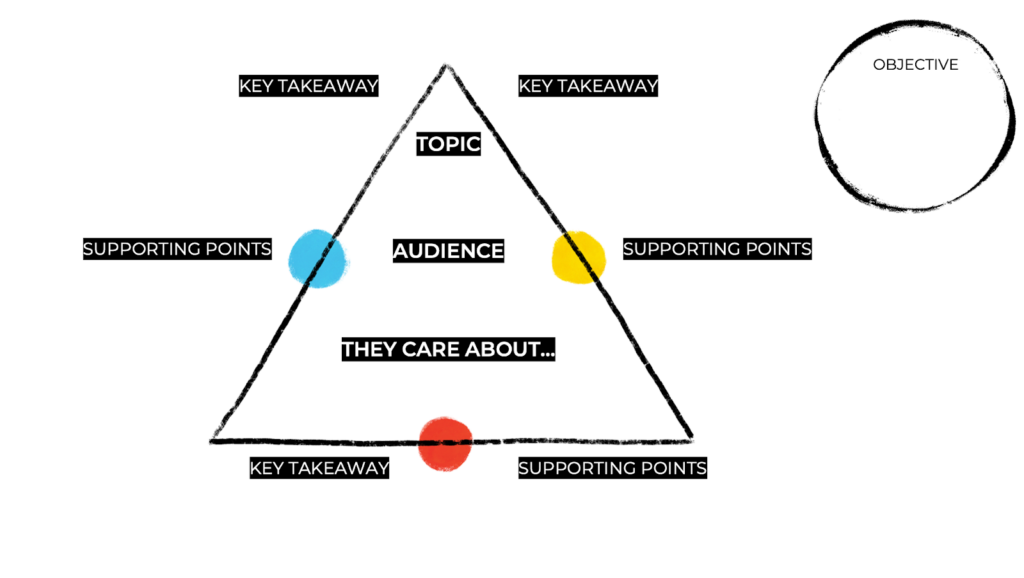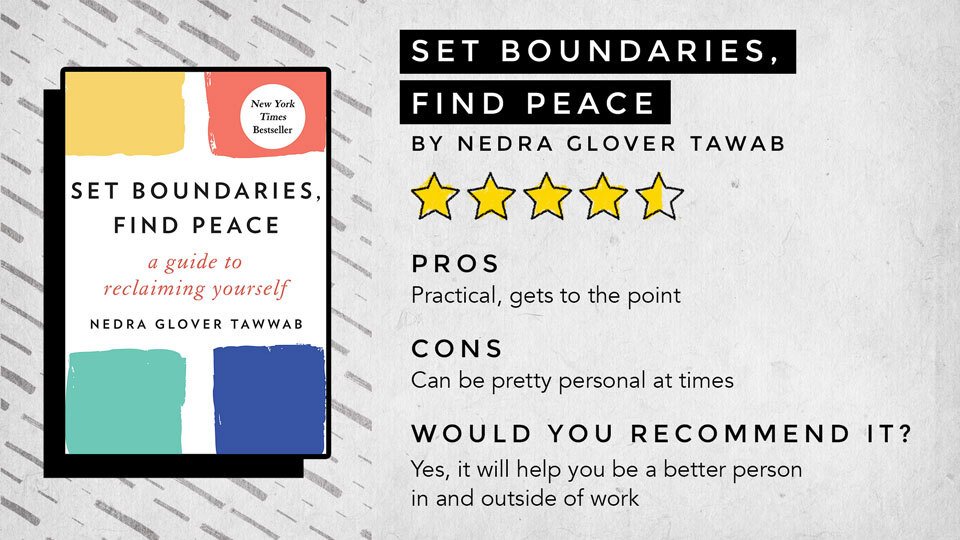The post Business Writing For High-Performing Teams (Or Dummies) appeared first on SNP Communications.
]]>Still not following? OK, so you like pie, right? We all (mostly) like pie. A good pie is a good pie, but it’s a good pie because of the quality of the ingredients and the skill of the baker, not solely because of its taste.
The sum is pretty great but the parts have to be great too.
So how do you make all those parts work together?
What is a high-performing team?
There are five key characteristics that define a high-performing team:
- Psychological safety: Everyone feels safe in taking risks around their team members, and that they won’t be embarrassed or punished for doing so.
- Dependability: Everyone completes quality work on time.
- Structure and clarity: Everyone knows what their specific expectations are. These expectations must be challenging yet attainable.
- Meaning: Everyone has a sense of purpose in their work (i.e., financial security, supporting family, helping the team succeed, etc.).
- Impact: Everyone sees that the result of their work actually contributes to the organization’s overall goals
Helping your team cultivate these qualities is important, and clear communication is at the core of it all. Without communication, all of these pieces fall apart, down to the last email typo.
The core of team communication in this hybrid world comes down to our conversations, emails, slacks, presentations, voice memos, you name it. And we’re getting them constantly.
A high-performing team knows how to make its messages clear, actionable, and memorable for its audience to help everyone drive toward succes. To put it simply, they’re good at business writing.
But first, a high-performing team needs to know its audience.
1. Know your audience.
A message means nothing if it’s not tailored to the person reading it. We often focus on our need to tell versus someone else’s need to know.
There are 5 key questions to ask yourself:
- Who is your audience/recipient?
- What do they care about in their role (function, responsibilities, stakeholders they answer to, etc.)?
- What is the objective?
- What do you want them to go do after hearing your message? (call-to-action)
- What are the key points to support your objective and call-to-action?
The prep might look like this.
A lead engineer needs to give a Q1 update to her team and the Finance team. She might answer the questions as follows:
Who is your audience/recipient?
- Engineering team: VP of engineering, Directors, Fellow Senior Engineers, and a few entry-level folks
- Finance team: VP of finance, Directors, accounts payable teams
What do they care about in their role? (Pro tip – you’ll want to focus on the highest level in the room)
- VP of Engineering: Cares about innovative products that make the company competitive, Striking the balance between quality and cost efficiency, and ultimately, revenue.
- VP of Finance: Cares about the ROI of projects and expenses, saving money, and generating revenue.
What’s your objective? What do you want them to go do?
- Increase available headcount either by reallocating existing team members or hiring new ones. (This could also be an ask for more financial support, for help aligning to a key message, even for help brainstorming key roadblocks).
What are your three key takeaways?
- Behind timeline
- Plan to get ahead
- Critical to competitive edge
Once you’ve thought about your audience, use what they care about to guide your main points.
2. Create an executive summary outline.
After you’ve clarified your objective and what your audience cares about. You can then dive into the content, starting with an outline.
Here at SNP, we love threes. Studies have shown that people generally won’t remember more than 3 things (Forbes). But, we tend to share too much information when communicating and do it in a roundabout, non-linear way, making it hard to follow.
So, the outline we like to use for presentations, emails, even wedding speeches is called the triangle. It keeps you anchored to three main points.

The middle holds all of your audience information which guides your content. The outside is where you fill in all your content. A key takeaway is 2-3 words. It’s short, pithy, and what you hope your audience walks away with. The supporting points can be as long or as short as you need, the purpose is to put the details in the middle.

After compiling your content, you can then tailor it to the format you’re sharing it in.
3. Edit your content to your medium.
If you were presenting an executive summary you might take your key takeaways, turn them into a paragraph like this…
In Q1, XYZ Project is behind timeline. We have a plan to get ahead. It’s important to invest in this project because it’ll provide a critical competitive edge.
We need your support in increasing the available headcount either by reallocating existing team members or hiring new ones. A number of roadblocks have put us behind timeline and a lack of team availability prevents us from testing the solutions to these problems. Our plan to get ahead depends on freeing up current team members, Peter and Jen, or bringing on two new contractors which would allow us to resolve these roadblocks in three weeks’ time. This would be a valuable investment because XYZ project provides a critical competitive edge to the company by enhancing our existing product, resolving current customer issues, and bringing in $500,000 quarterly in year one once launched.
Again, XYZ Project is behind timeline but we have a plan to get ahead. To move forward and gain a critical competitive edge, we’d like your buy-in on reallocating team members’ time to focus on this project or providing financial support in expanding the team.
If you were turning it into a presentation you might add more to your supporting points and break each point into a slide with the necessary evidence.
But most of us, we’re communicating important messages in email.
Here are ten things to keep in mind when writing an email:
11 email best practices for business writing
- Put the most important information first
- Use short sentences. Can it be <7 words?
- Use short paragraphs (1 idea per paragraph)
- Use the active voice (“We reached the goal” instead of “the goal was reached”)
- Use action verbs and concrete nouns
- Avoid jargon and clichés
- Keep the tense consistent – have a reason for changing tenses
- Show, don’t tell (follow a generalization with an example)
- Use good grammar and proper punctuation
- To check tone and a conversational style, say it out loud
- Make sure you have an actionable and detailed subject line
Here’s what this looks like in practice…
Subject Line: APPROVAL NEEDED THUR, MAY 4th – Headcount Increase for XYZ Project
Hi all,
For XYZ Project, we need your support in increasing the available headcount to solve current roadblocks and get ahead of timeline.
- Roadblocks have put us behind timeline.
- More headcount would resolve this in three weeks.
- This project provides us with a critical competitive advantage.
A number of roadblocks have put us behind timeline. A lack of team availability prevents us from resolving the roadblocks.
By freeing up current team members, Peter and Jen, we can get ahead of timeline. We could also hire two new contractors for the duration of the project. With these added team members, we’ll resolve the roadblocks in 3 weeks.
XYZ project provides a critical competitive edge to the company. It enhances our existing product. It resolves current customer issues. It’s projected to bring in $500,000 quarterly in just year one once launched.
Again, we need your support in increasing the available headcount to solve current roadblocks and get ahead of timeline as this project is critical for a competitive edge.
Best,
Engineer
These skills seem basic, but when we encounter high-stress situations or quick turnaround times it’s easy to go with what’s simplest rather than what’s most effective.
High-Performing Teams Put in the Effort
High-Performing teams do the work. Period. Yes, they achieve great results, but it’s the effort they expend in between the start and achieving success to create psychological safety, to provide structure and clarity, to be dependable, and to illuminate meaning and impact that makes them high performing.
Communication is the crux of achieving all of these qualities as well as success.
Go back to basics. Understand your audience. Make your content clear with an executive summary outline. And then tailor it to your medium.
Want to bring a Business Writing training to your team? Reach out to us at [email protected]
The post Business Writing For High-Performing Teams (Or Dummies) appeared first on SNP Communications.
]]>The post Book Review for Set Boundaries Find Peace by Nedra Glover Tawwab appeared first on SNP Communications.
]]>DISCLAIMER: This book was read and reviewed from the perspective of Jaselin Drown – Strategic Account Manager and Content Marketing Manager at SNP.
Highlights: Book review for Set Boundaries Find Peace

4.5/5 Stars
- Pros: Practical, Gets to the point, Matter-of-fact presentation
- Cons: Can be pretty personal at times
- Would I recommend this? Yes, it may get personal, but this will help you be a better person in and outside of work.
Key Takeaways
- “If you don’t like something, do something about it.”
- Setting boundaries is a skill
- There are three types of boundaries: porous, rigid, and flexible.
“If you don’t like something, do something about it.”
The word “boundaries” gets people buzzing––people love it or hate it. At work, setting boundaries tends to get the misconception that it’s about saying no and that those who set boundaries don’t care about the work or their team. But, setting boundaries is more about managing your mindset than the people around you.
Tawwab says in her introduction, “If you don’t like something, do something about it.” Boundaries are about taking responsibility. You have to be the one to own them and enforce them.
So when might you need boundaries? Tawwab lists out a few signs:
- You feel overwhelmed
- You feel resentful toward people for asking for you help.
- You avoid phone calls and interactions with people who might ask for something
- You make commments about helping people and getting nothing in return.
- You feel burned out.
- You frequently daydream about dropping everything and disappearing.
- You have no time for yourself.
If one of those bullets applies to you, you may be thinking about changing jobs. Tawwab calls out that, that might not be enough to change the situation. You might get to your next job and repeat the same patterns.
Tawwab implores us to ask ourselves three questions before pulling the escape hatch:
- Have I tried setting any boundaries?
- In what ways do I contribute to this situation
- What can I do to make this situation healthier?
Setting boundaries is a skill
Ok so we haven’t quite answered the question, what does a boundary look like yet?
Tawwab defines boundaries as “expectations and needs that help you feel safe and comfortable in your relationships.” (Page 5)
Tawwab also lists out a few signs that indicate poor boundaries at work.
- Doing work for others
- Being asked about personal issues
- Taking on more than you can handle
- Not delegating
- Flirting
- Doing jobs intended for more than one person
- Not taking advantage of vacation days
- Saying yes to tasks you can’t responsibly complete
- Engaging in stressful interactions
- Working during downtime
- Not taking needed time off
- Working without pay
I don’t agree with all of these. Sharing personal stories or issues in appropriate situations can help build relationships with colleagues. And, sometimes, as a high-performing team member, you might accidentally bite off more than you can chew or work during downtime. What is important is finding the balance so that you don’t end up emotionally dumping on your colleagues or getting to the point of burnout. Boundary setting is a tool to establish that balance.
To do that you need communication and action (page 13):
- Communication: No one is a mind reader, people don’t know your boundaries unless you communicate them. And to communicate them you have to know what your boundaries are.
- Action: Uphold what you communicate through your behavior when your boundary is crossed, otherwise, that boundary will continue to be crossed.
Communicating a boundary
For example, if you’re at capacity with your workload and you get asked to take on a new project you might say…
“I won’t be able to take on more work right now. Happy to chat again once this project is complete later this month.”
Taking action
Now comes the hard part––action. Say the person who made that original ask tries to get you on the project anyway by inviting you to a sync after you’ve said you didn’t have the bandwidth. If you don’t enfore your boundary, then that person will know they can keep asking you for things when you say you’re at capacity. If you enfore it too strictly, you might ruin the relationship or discourage them from coming to you with future opportunities. SNP would say be curious and solution-oriented when setting a boundary.
RSVP no, then email the organizer/person who invited you and check-in…”Hey, I see I’m on this meeting. What were you hoping I could add to the discussion?”
Figure out where there coming from first and assume positive intent. Say they then respond with, “Oh, wanted to keep you in the loop. Was hoping you could take on xyz responsibilities with the project.” This is where you reinforce your boundary.
“Thank you for keeping me in the loop. As previously discussed, I cannot take on more work right now. Happy to chat again when these projects that I’m working on are complete. If you see a solution that would work for both of us in the meantime, let’s talk it through.”
You recognize their good intent. You restate your boundary and offer your solution of a later time frame. And you close by keeping the conversation open to what other solutions they have in mind.
If that example felt lengthy, it’s because it is. Setting boundaries is a skill that requires consistent effort, practice, and perseverance.
There are three types of boundaries: porous, rigid, and healthy
Now when you’re setting up your boundaries, there are three types to know about (page 10 – 12):
- Porous boundaries are weak or poorly expressed and are unintentionally harmful. They lead to feeling depleted, overextending yourself, depression, anxiety, and unhealthy relationship dynamics. Think: oversharing, codependency, inability to say no, people-pleasing, dependency on feedback from others, paralyzing fear of being rejected, accepting mistreatment.
- Rigid boundaries involve building walls to keep others out as a way to keep yourself safe. But staying safe by locking yourself in is unhealthy and a self-protective mechanism meant to build distance. Think: never sharing, building walls, avoiding vulnerability, cutting people out, having high expectations of others, enforcing strict rules
- Healthy boundaries are possible when your past doesn’t show up in your present interactions. They require a clear awareness of your emotional, mental, and physical capacities, combined with clear communication. Think: being clear about your values, listening to your own opinion, sharing with others appropriately, having a healthy vulnerability with people who’d earned your trust, being comfortable saying no, being comfortable hearing “no” without taking it personally.
Be Solution Oriented
Again, SNP would add to all of this boundary setting: be solution-oriented. If someone is coming to you at work with an ask, assume positive intent and help where you can. For example, if someone is asking you for something after hours you could say something like:
- I’m not online for the rest of the evening, but I can get it to you first thing in the morning.
- I’m doing XYZ right now, but I can be back at my desk at xyz time to send it to you.
- I can’t get this to you, but I talked to John, and he has some time to help you.
Of course, this involves a little extra work like checking your calendar, asking around to tap in colleagues, and also just being comfortable with saying no in order to show up at work better the next day, but that extra mile is what differentiates a high-performing team that supports one another.
We may not all agree
We may not all agree on what boundaries are or how they should be expressed. But, I think we can all agree that it’s our responsibility to do what we can, communicate with each other, and improve our situations while helping others.
As we said in our previous blog (a book review for How to Do the Work by Dr. Nicole LePera), there’s no quick fix. Practice, practice, persist.
The post Book Review for Set Boundaries Find Peace by Nedra Glover Tawwab appeared first on SNP Communications.
]]>The post Listening Is Difficult. Here’s Why. appeared first on SNP Communications.
]]>Ever drift off to a random thought mid-meeting, only to come back wondering what the hell the other person is talking about? Or worse, they’ve asked you a question and you have no idea what they’ve just asked? “Oh sorry, I got distracted, I wasn’t listening”. Yeah, not the best look.
The thing is no one is ever listening. Ever. When someone starts talking, the mind has a million avenues it can go. “Have I sent that email?”… ”That project document deadline is tomorrow and I’m behind”… “Oh, look! A notification – I should check that – it might be important.”… “Wow my Zoom background is terrible, maybe I should get a plant.” “Is now a good time to adopt a pet?”

The list goes on…
Whether we’re in-person or virtual, it’s hard to be fully present and listen to another person. Even when we’re trying our best. Listening truly is a skill, a discipline to be practiced. Like learning a new language or an instrument.
So, how do you do it? How do you know if you’re actually listening? Try this: See if you can capture the essence of what the other person has said with a quick playback.
For example:
Colleague: “This project has taken forever. We’ve had so many blockers and lengthy negotiations with legal and policy. So much back and forth. It’s been really, really challenging. I’m so glad to see it launch at the end of the month”
You: “It sounds like this has been a tough project but the end is in sight.”
The other person will either confirm, modify, or correct you. Whatever the reaction, you can be confident that you’re making the other person feel heard. It also challenges your own assumptions of a situation, helping you gain a little more clarity.
The impact?
Better understanding, building empathy, and deepening the relationship. Not bad for a quick playback.
Still unsure if you’re listening or not? Check out our other blog post, the 5 Signs You Don’t Know How To Listen.
The post Listening Is Difficult. Here’s Why. appeared first on SNP Communications.
]]>The post 5 Signs That You Don’t Know How To Listen appeared first on SNP Communications.
]]>Listening is an easy concept to understand, yet it’s very difficult to do. Putting it into practice requires attention, focus, and a hell of a lot of energy.
You’re probably thinking ‘Not me. I’m a GREAT listener. One of the best.’ Ok, maybe not that exact thought process. You get the idea. So, how can you check?

How can you tell if you’re a good listener? Start by assessing if you don’t know how to listen. Here are 5 signs:
1- You’re thinking about something else
You’re nodding, you’re smiling, you might even throw in a “yeah, totally”, but you’re thinking about something else. Probably contemplating whether to have burritos or pizza for dinner (just me?). The good news: either dinner option is fantastic. The bad news: you’re not listening.
2 – You interrupt
Ever catch yourself talking over someone or cutting them off before they’ve finished speaking? Maybe you’re excited to make a comment or share some information; or perhaps you think what you have to say is more important. Either way, interruptions get in the way of listening, which gets in the way of understanding.
3 – It’s all about you
Let’s say you don’t interrupt someone (congrats – reward yourself with a burrito). Pay attention to your response. Does it frequently contain “I” or “me” in it? If so, you’re on track to make it about you. Do that consistently, and your self-orientation can get in the way of connecting with others and creating the space to listen. It’s okay to talk about yourself sometimes — try to avoid leading with it and see where the conversation goes.
4- You hijack the conversation
Wayne starts to tell you about his trip to Spain, and you jump in with stories about your experience studying abroad in Spain and how good the jamon is. Before you know it, you’re talking about that night you went clubbing in Madrid and lost your left shoe. But Wayne wanted to talk about the beautiful beaches of Malaga before you hijacked the conversation. A fun conversation for you, but how’s Wayne feeling? Entertained? Perhaps. Listened to? Nope.
5 – You don’t learn anything
What do you learn when you’re talking? Nothing. If you walk away from a meeting or conversation and realize you didn’t learn anything new, it’s a sign that you might be talking too much. Talk less. Listen more. Learn more.
After reading this list, can you honestly say that you’re a perfect listener? Probably not. But that’s ok, nobody is. *It just means you need to practice. And it’s never too late to do that. Also never too late to eat a burrito. Speaking of which…
* Check out our Start Here: Listen workshop. It’s free, it’s only 45 minutes, and it’s an opportunity to get even better at listening—and connecting—with others.
The post 5 Signs That You Don’t Know How To Listen appeared first on SNP Communications.
]]>The post 5 Reasons Why No One is Listening In Your Meetings appeared first on SNP Communications.
]]> I would argue with Dante that one of the circles of Hell involves meetings. Specifically, those that get nothing done and shouldn’t have been a meeting to begin with. There’s nothing that makes my skin crawl more consistently than sitting through a terrible meeting when I could be getting my work done. Sound familiar?
I would argue with Dante that one of the circles of Hell involves meetings. Specifically, those that get nothing done and shouldn’t have been a meeting to begin with. There’s nothing that makes my skin crawl more consistently than sitting through a terrible meeting when I could be getting my work done. Sound familiar?
Meetings have been a point of contention even before everyone started working from home. But now that we’re all virtual (to varying degrees) it becomes even more important that your meetings are run efficiently and have purpose.
Here are 5 warning signs that your meetings are wasting time and approaching Dante’s circles…
1- Your meeting shouldn’t be a meeting.
This probably seems obvious, but think about it. How often have you (or one of your colleagues) paused and asked – is a meeting the best format for this conversation? If all that happens in a meeting is that people are sharing updates with no action items afterward – couldn’t that be done in an email? Or get creative. Maybe it’s a brief audio recording with the weekly updates. With on-demand options, it’s much easier to get everyone updated but on their time. I know I’d much rather listen to an update while doing the dishes vs sit in a meeting for an hour of updates.
2- You don’t invite others to share.
Even if you have a packed agenda with incredibly relevant content for everyone to hear, don’t forget to create space for others to share. Do this at the beginning of the meeting. Not halfway through. Not at the end. You may not have time to address every single thought or suggestion made by your peers, and that’s ok. But get them to share. I promise you won’t be just filling the virtual room with hot air.
When people don’t get a chance to share what’s on their mind, guess what? They’re not going to listen. They’ll be too focused on their own ideas and thoughts. Don’t fight this, get their ideas out. Bring them to the table. A collaborative meeting is an engaging meeting.
3- You’re talking too much.
Even if you have amazing content, people don’t have the attention span to listen to an uninterrupted monologue. Especially in the virtual environment. You should only have one voice speaking for no more than 2-3 minutes straight. Even less time is better.
Wondering how to share all your content and still mix it up with other voices? Ask questions. Create polls. Use the chat feature. Again, anything to mix it up. If you don’t believe me, pay attention to the next podcast or radio program you listen to. See how long the speaker lasts before pulling someone else in.
4- You’re working with a passive audience.
We’ve already talked about how creating space for others to share gets folks talking sooner rather than later. But it doesn’t stop there. Once people get cozy and comfortable – and they’re likely in their sweatpants so you know it’s going to happen quickly – they stop paying attention. They become passive participants. Don’t let it happen! Pull them in. Just make sure you set them up for success when you do it.
This means calling their name FIRST and then giving a quick recap before asking them a question. It’ll feel redundant to you but I promise they’ll appreciate the chance to catch up… and at the very least, it allows them to find the mute button and avoid the infamous phrase, “Sorry, I was on mute.”
5- All talk, no action.
In the end, if your meeting doesn’t have some sort of next step, it was probably a waste of time. So make sure to save at least 5 minutes at the end to recap and assign next steps. Even if it’s just to have someone look into a project and report back later. Figure it out. If you don’t have any action items, refer back to step 1.
The post 5 Reasons Why No One is Listening In Your Meetings appeared first on SNP Communications.
]]>The post Active Listening: The Skill That Makes The World a Better Place appeared first on SNP Communications.
]]>In his recent book, Humankind, author Rutger Bregman dissects human history to make the case for our goodness. Bregman argues that we are inherently good and we are reinforced by our ability to empathize and bond with others. Most importantly, this bond is built on being seen, heard and understood.
In business, we call this listening. Better yet, active listening. This all-important skill involves open-ended questions, mirroring, and playbacks.
The Skill of active listening (add keyword to heading)
But, is that all there is?
Some years ago, a well-known business leader quoted my partner and wife in her best selling book, saying something to the effect that “Maureen ‘Mo’ Taylor was the first person to tell me to shut up.” As Mo’s husband, I feel her pain. Mo’s point goes to the real challenge of listening: the ability to turn off our ego and (even better) that dreadful voice in our head which feeds our insecurity.
Truly listening requires the ability to suspend judgment, skepticism, and the need for confirmation of our worth. This is often because we talk as a performance instead of listening as a service to others.
Listening in everyday life (another heading needed)
Some years ago, I began a practice of silence in the morning. Once I turn off the alarm, I don’t look at my phone, turn on my computer, or create any sound distractions. I only focus on doing my morning routine in total silence, paying attention to the sounds I make when my feet hit the floor, when I make my bed, and when I ground my coffee.
After a few weeks, I began to say hello to these sounds and landed on the idea of “sound as greeting.” This came in handy during my time in London when I could hear the Victoria Line rumbling below my flat at 6am. These quiet mornings taught me the art of being fully present–a key element to listening.
I started reading books during these morning sojourns and adopted the idea of fully considering everything I read. Instead of being judgmental or skeptical, I accept what I read and allow myself to consider it true–giving the author the benefit of the doubt.
After a few months, I realized I had opened up a new mechanism for learning. Now, instead of pre-filtering what I read, I allow for full consideration then evaluate the ideas over time. It’s become my model for active listening.
Listening and being listened to is a Human Need (added more to heading)
Psychologists tell us that being understood is right up there with food and sex. Some believe it’s our greatest human need. Being understood requires being heard. Being heard requires non-judgmental listening. Non-judgmental listening requires focus and egoless presence. Taken together, this process creates empathy which allows us to bond with others unconditionally.
Rutger Bergman says this empathy and bonding fuels our natural goodness. At SNP, we search the world for good people and help make their truth persuasive in order to make the world a better place. And all of it–the goodness, the empathy, the bonding, the truth–all of it starts with listening.
Quoting the old school communication pros, “It’s not what you say that counts. It’s how you make people feel.” Listening it turns out is not just a powerful tool in business and life, it’s an emotion that makes the world a better place. How about that?
The post Active Listening: The Skill That Makes The World a Better Place appeared first on SNP Communications.
]]>